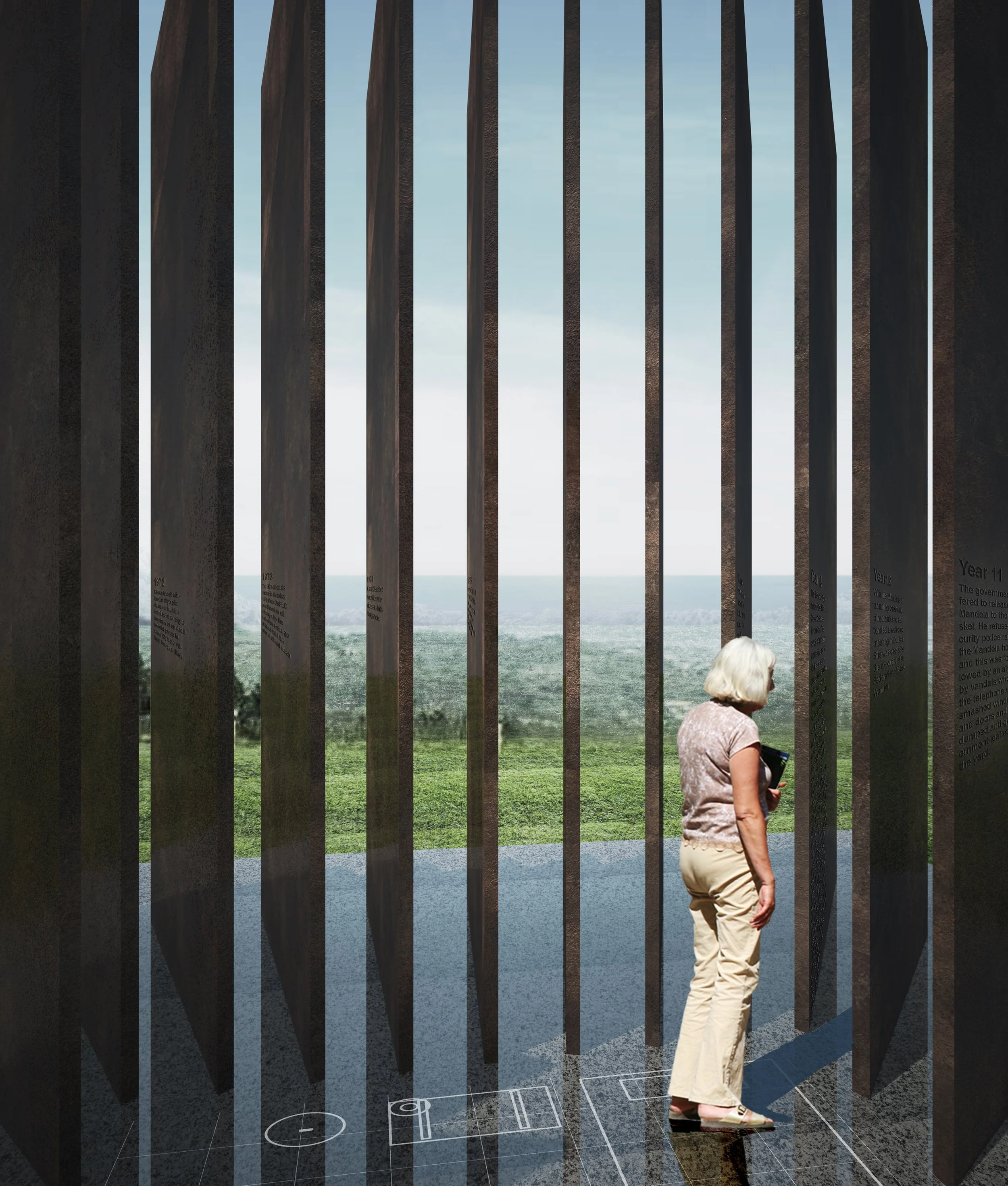Open Imprisonment — Nelson Mandela Memorial
As Alois Riegl defined it, the practice of memorialization is the creation of an object or space for the purpose of preserving particular human deeds or destinies. It reflects historical action, but critically, it also shapes our future. This task reveals the implicit responsibility—and potential liability—of memorialization.
New construction in remembrance of the past can, first, manipulate public perception toward an authority’s political inclination. When evidence, figures, and references are overly emphasized, a memorial engages the public in a linear way—strongly framing a singular viewpoint that can constrain perception and learning. Second, for subsequent generations without direct experience of the event, a memorial risks becoming a purely sensational or artistic expression. Its didactic function weakens, leaving viewers uncertain between its artistic and commemorative values.
Open Imprisonment seeks to overcome this dilemma by pursuing a balance between art and education—anchored in clear, irrefutable evidence for its didactic purpose, while employing artistic strategies that critically engage the public. In this way, the memorial invites multiple interpretations, allowing visitors to explore diverse ways of understanding Nelson Mandela.
The memorial centers on an 8’×7’ space, dimensionally identical to the cell on Robben Island where Mandela was imprisoned. This cell is enclosed by twenty-seven angled walls—each representing one year of Mandela’s imprisonment—tilting inward to evoke spatial and psychological compression. From the surrounding park, the memorial appears closed and monolithic; once inside, however, visitors encounter expansive views of the landscape beyond.
Inscribed on the floor are outlines of the bed, toilet, and small table Mandela once used—suggesting a tangible sense of place and connecting visitors to his struggle and triumph. The passage of time is also inscribed on its walls: on the exterior, each wall is dated and engraved with a statement contextualizing global events of that year; on the interior, each wall is numbered and paired with descriptions of South African history and key moments in Mandela’s life.
A walk around the exterior sets the global stage, helping visitors grasp the enormity of twenty-seven years in confinement. Once inside, they encounter Mandela’s personal timeline—his milestones, memoirs, and historical context—prompting reflection on how his life intertwined with broader global transformations. In this way, the memorial initiates a dialogue between personal and collective memory, between Mandela’s individual struggle and the world history that unfolded around it.
Open Imprisonment is inextricably linked to the life of Nelson Mandela—seen by the world as an imprisoned man, yet whose vision and perseverance transcended the walls of his cell, extending his fight for freedom to every corner of the world.



